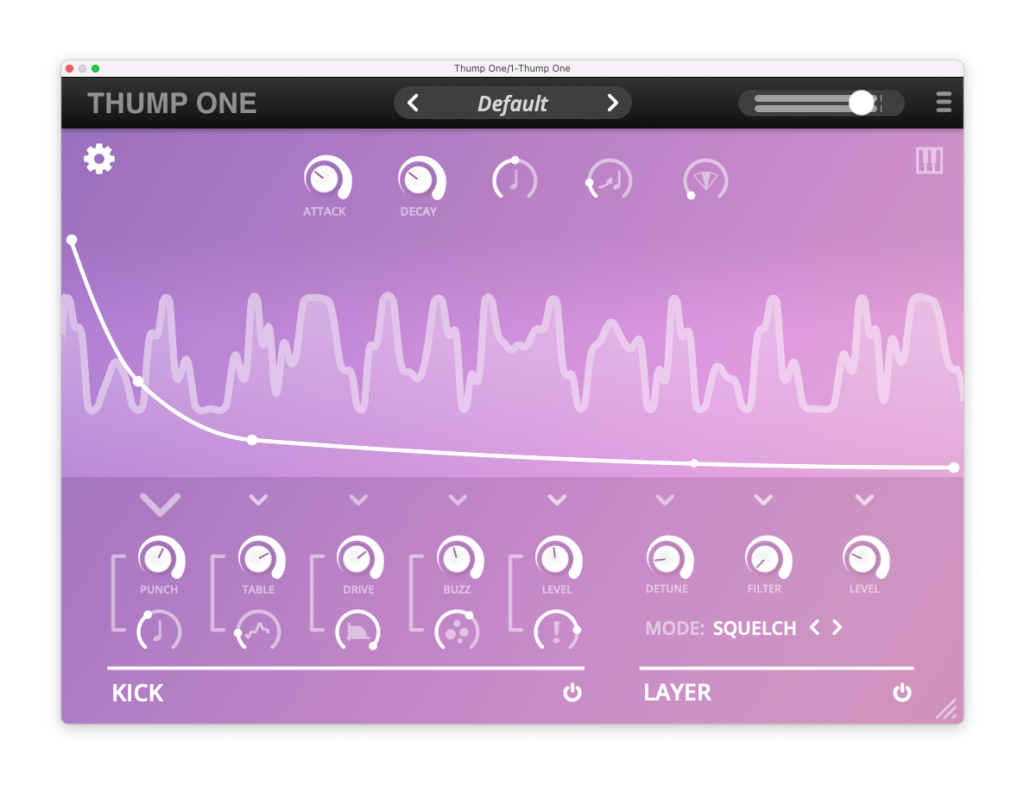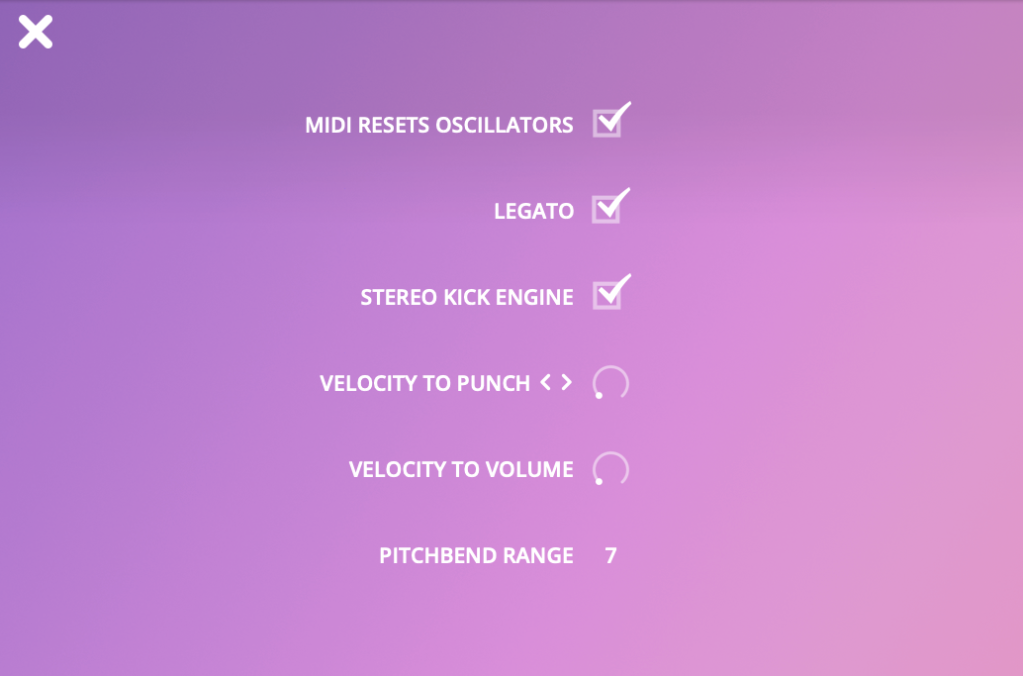What if you could take the essence of a melodic 808 kick, a wavetable synth, the thick supersaw from a JP8000, and an edgy percussive synth and mash them all together into one magical lead-kick-synth? And then what if you made that free? Well, that’s just what Toybox has done with the Thump One. It’s the deluxe banana split covered in whipped cream dessert treat of synthesizers – and you deserve it.
Listen to this thing:
That’s just messing about – the FM and cross-modulation options also mean this is beautiful for percussion sounds, not just kicks or synth leads. (Have a look at the presets for some starting points.)
This is Toybox’s first-ever plug-in – the developer is known for their great work on Reaktor modules and Reaktor Blocks. I’ve sung their praises before; they’ve got some of the best analog filter models in the entire business, which these days is saying a lot. It’s hard to put your finger on it, but it’s just some of the stuff that’s magic. So yeah, while big devs muck around with complex offerings and subscriptions, you get indie developers like Toybox where everything is cheap, free, and very often superior in quality. (See below for some links to working with them in Reaktor Blocks, which you can get started with entirely for free even if you don’t own Reaktor.)
If this plug-in is a hint that they plan more, we’re in for a great ride.
There’s both this free desktop version (Windows VST3 and macOS VST3 and AU) and an inexpensive iPad-ready version for AUv3.
https://www.toyboxaudio.com/pages/thump-one
Let’s break down what the heck it is, because Thump One is a lot of different things. I was afraid it was going to be Yet Another Compressor Thing. Then you think, oh, I guess it’s a kick synth. Or a chromatic 808 bass plug-in. Or … wait, it’s a wavetable synth? Or like a lead synth?
It’s all of those. And it seems perfectly timed for a lot of the hard-hitting club sounds folks are after again – minus all the fuzz, nostalgia, and murk that was in vogue for a while.
There are two engines, which you can play together or separately:
- Kick is a wavetable oscillator + saturation and filtering circuit + “buzz” circuit
- Layer is the whipped cream in my metaphor – a modeled version of the Roland JP8000 supersaw oscillator
Each of those has a lot of different modes and options.
The design is clever, because you have a bunch of knobs ready to tweak, hardware-style, but also a big oscilloscope with a multi-segment envelope that you can drag around freely. Since the heart of this beast is lots of waveshaping and envelope manipulation, that gives you constant visual feedback and easy ways of shaping this in the direction you want. And that lets you morph through the spectrum between kick/percussive sounds and leads/instrumental sounds, plus all the bits in between.
Inside, you’re loaded up with still more options:

Pitch controls pitch modulation from the envelope, with a note for tuning underneath.
Wavetable has selectable pitch and wavetables – wavetable position on top and wavetable selection below. Those wavetables come from 808 kick recordings which they’ve further tuned.
Drive controls analog saturation of both engines, and has its own filter.
Buzz simulates a torn speaker cone, with a dedicated tone control.
Level controls the volume of kick, but you’ll notice you can also experiment with clipping this value.
FM is a dedicated oscillator for modulating the kick.
Detune detunes the 7 voices of the supersaw (or amount of static for noise or feedback for FM).
Layer modes include different intervals (unison / fifths / octaves etc.), cross modulation with the Kick, Noise, and FM.
Then you also have master parameters along the top: envelope attack and decay, master pitch and glide, plus an additional stereo chorusing effect with stereo width control.
Don’t miss the settings page, either, as there are some useful tweaks for how MIDI input modulates the sound – mapping velocity to punch or volume (with amount), legato, stereo enable/disable, pitch bend range, and MIDI trigger resetting oscillators:

What is a little bit confusing is that these two engines interact. The Drive control impacts both engines directly. Several of the Layer modes work with cross-modulation – so tweaking the Kick engine will impact Layer. And the FM mode in Layer actually uses the Kick as its modulation source – though you can use just the FM oscillator output if you mute the Kick.
In practice, though, this almost encourages active experimentation, and it’s very much like what you might patch together in a modular rig, so all of Toybox’s modular experience really shows here.
You can randomize, you have MIDI learn. And the iPad version has a nice approach to presets so you can use the iPad as a remote tool for making some patch designs on the go:
To make it easier to share and backup user presets the app will automatically backup all newly created presets into a folder that can be accessed using the ‘Files’ app: “On My iPad/Thump One/Exported Presets”. Every time you launch the standalone version of the app it will backup any newly created presets that were created either in the AUv3 or the standalone version of the app.
The only thing that’s missing here, really, is that Thump One lacks its own modulation and effects sections. Obviously, they could do a paid version later that has those, but I might be happier just to use this with my other stuff. You can use your favorite modulation tools in Ableton Live, or Reason, or VCV Rack, or Bitwig Studio – Live users, I recommend the free Mod Squad tools. And you can also add your own effects; this pairs perfectly with Sinevibes’ stuff both visually and sonically. Or for some really wild effects, try following the tutorials for GMaudio Squeeze at extreme settings, leave some space between notes, and get ready for some far-out waveshaping sonic squelchy madness.
But this really ranks up with Future Audio Workshop’s SubLab XL in the kick synthesis territory.
More Toybox goodness:
First, I wrote this tutorial for Native Instruments: